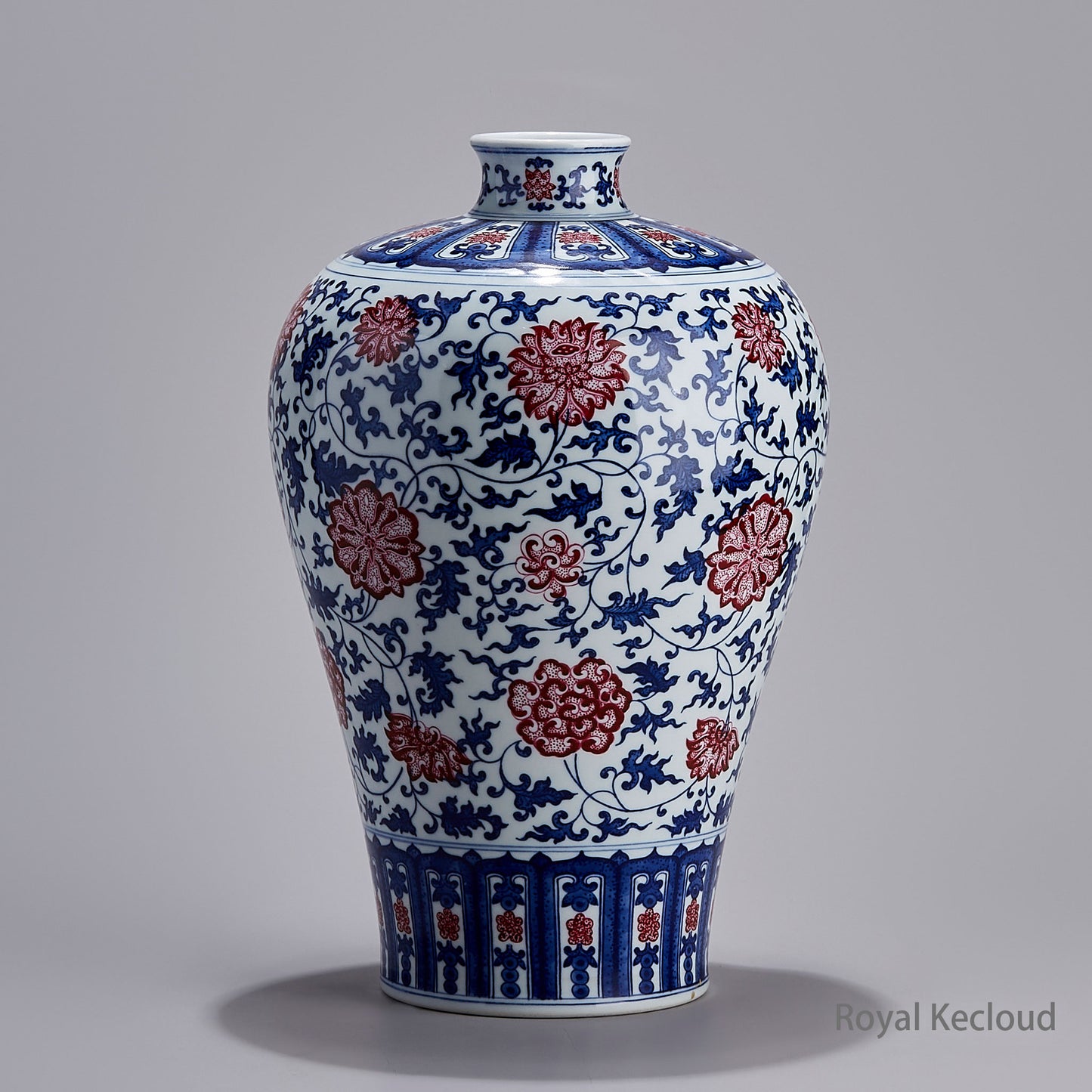
About the Item
Description
The vase has a small mouth, a short neck, wide shoulders, and a slightly tapering downward body, decorated with interlocking lotus pattern ( Interlocking lotus pattern is a traditional Chinese auspicious motif, which originated in the Han Dynasty, and is also known as the "vine of longevity" because of the endless vines.) painted in red and cobalt blue under the transparent glaze layer, complemented by banana leaves, lonicera, and a distorted lotus petal pattern and other trim. The vessel is beautiful and elegant.
Details
• Function: Decorative crafts, Tabletop Vase, Perfect Gift.
• Glaze type: Blue-and-white.
• Materials & Techniques: Ceramic, Hand-Painted.
• Packaging: Box
• Place of Origin: Jingdezhen, China, the home to handcrafting royal porcelain for royal families worldwide.
Delivery
Shipping and Lead Time
All items are handcrafted by folk artists and craftmen. It usually takes about 3 months to finish a product. We kindly suggest that you contact us before you place an order. Each order is carefully inspected and packaged before it leaves our warehouse to avoid damage during transit.
Lead Time: 105 calendar days after order confirmed and payment made.
Custom Order Only
Because of the nature of this category arts, we provide custom orders only.
Embedding Families or Organizations Names:
As porcelain antiques may be inherited for thousands years. We may embed your family or organization names inside or on the bottom as Chinese Royal Families (Emperors) did, to record the honors of your families and organizations and pass to generations and generations.
Please contact us by email.
Couriers
We use DHL or Fedex by air. The tracking information will be sent to you when your order shipped.
Please inspect your package immediately upon arrival and report any damages/errors within 3 business days.
Returns
Customer satisfaction is our top priority. We check each piece of items before deliver to insure quality.
These handcrafted masterpieces are not allowed for return, except for quality issues, damage, or wrong items upon the receipt of items.
The returned/exchanged product must be in its original condition, unused and in its original packaging. Special order items cannot be returned.
As soon as you return your item to us and it's received into our system, we will expeditiously send a refund request to your bank. Please note that while the funds are instantly deducted from our account, some banks may take 5-7 business days to process and post these refunds to your account.
About “MeiPing”
Over the centuries, Chinese ceramics have developed a wide variety of shapes, some forms based on earlier jade carvings or bronze castings, which have evolved throughout history. There are about 30 common shapes of Chinese antique vases.
The meiping originated in the Tang dynasty (618-907) as a wine storage vessel often found in tombs. Later the shape was used for decorative vases during the Song dynasty, a high period of innovation in Chinese ceramics with technical mastery and refinement. The name ‘plum vase’ comes from the use of placing plum blossoms in the vase. The body is tall and slender with a short narrow neck, broad rounded shoulders, tapering to a narrow base. They sometimes had lids, which were often lost, and variations include hexagonal meiping vases. The meiping vase can be found in in almost all styles of glaze including celadon, qingbai, blue and white, copper-red, wucai, doucai, and famille-rose.

